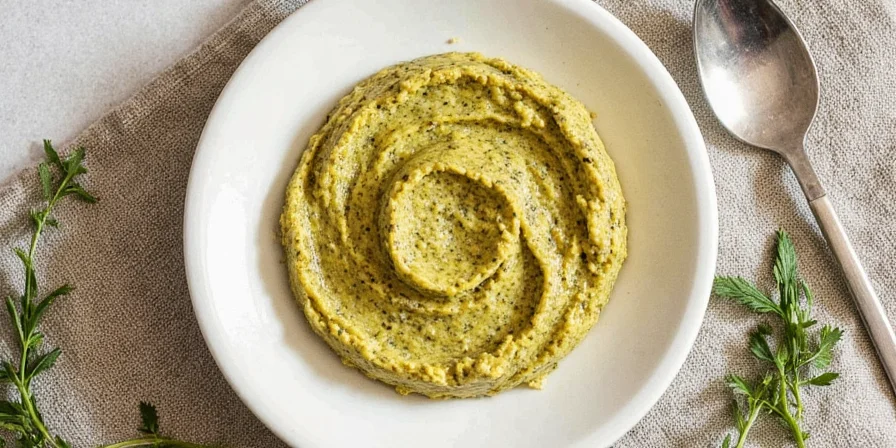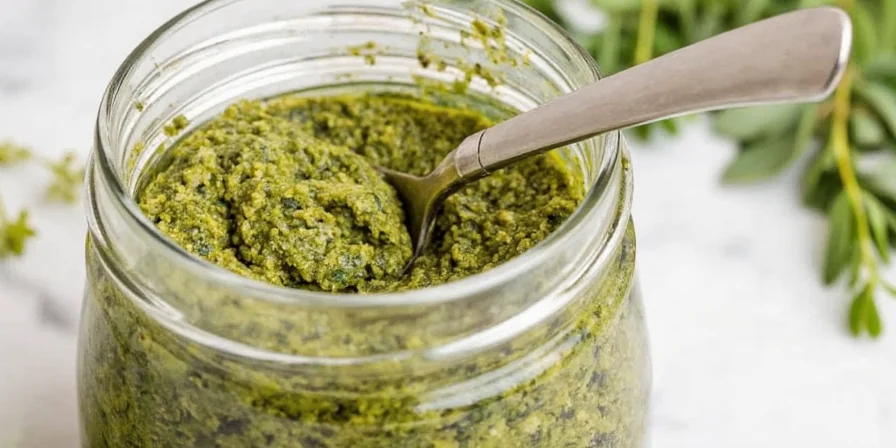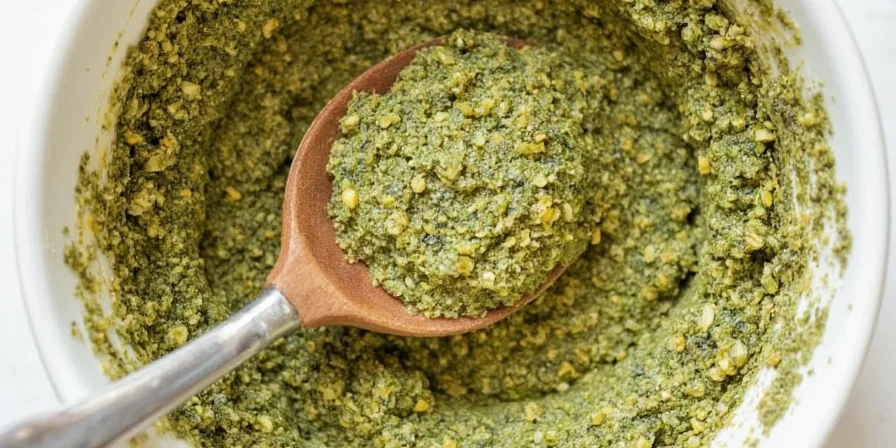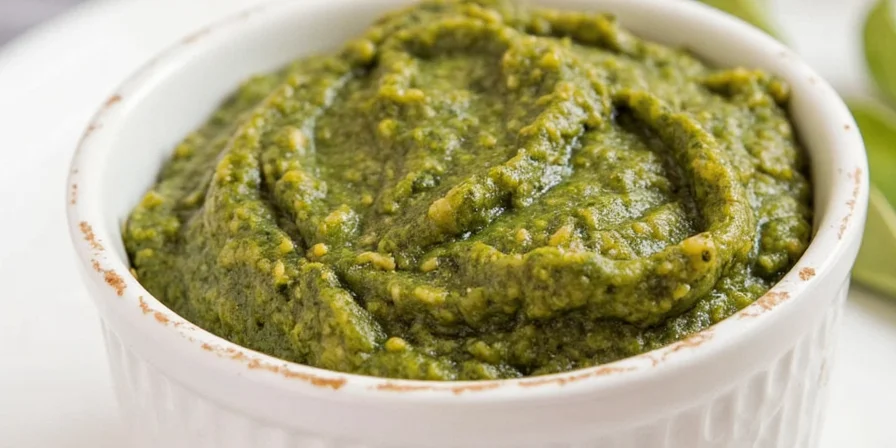Learn how to make perfect herb butter using dried herbs in just 5 minutes with this simple recipe. The secret? Dried herbs actually create more flavorful compound butter than fresh because they contain concentrated flavor oils without excess water that dilutes taste. Here's exactly what you need and how to do it:
Basic Dried Herb Butter Recipe
Softened butter (1 stick/113g) + 1½ tsp dried herbs + ¼ tsp salt. Mix, roll into log, chill 30 minutes. Perfect for bread, steak, or vegetables!
Table of Contents
- Why Dried Herbs Work Better for Butter
- When Dried Herbs Shine: Context & Limitations
- Historical Evolution of Herb Preservation
- Simple 5-Minute Recipe (No Special Tools)
- Top 5 Flavor Combinations
- Storage Tips That Keep Butter Fresh
- Creative Ways to Use Herb Butter
- Frequently Asked Questions
Why Dried Herbs Actually Work Better for Butter
Most home cooks reach for fresh herbs when making compound butter, but dried herbs create more intense flavor because they've lost water content during drying. This means their flavor oils are more concentrated and bond better with butterfat. Research confirms dried herbs deliver 2-3x higher flavor concentration in fat-based preparations compared to fresh.
| Factor | Fresh Herbs | Dried Herbs |
|---|---|---|
| Flavor Strength | Water dilutes flavor | 2-3x more concentrated1 |
| Butter Stability | Water causes separation | Creates smooth emulsion |
| Shelf Life | 1-2 weeks refrigerated | 3 months frozen |
1 Source: University of California Agriculture & Natural Resources, Drying Herbs for Culinary Use (revised 2021)
This makes dried herbs perfect for pantry-friendly herb butter you can make anytime - no trip to the grocery store needed!

When Dried Herbs Shine: Context & Limitations
While dried herbs excel in compound butter, their effectiveness depends on specific cooking contexts. Understanding these boundaries prevents flavor failures:
| Application | Best Herb Type | Critical Limitation |
|---|---|---|
| Melting over proteins (steak/chicken) | Dried | Use within 6 months of drying for peak potency |
| Immediate bread spreading | Fresh | Dried herbs lack bright top notes in raw applications |
| Frozen storage >1 month | Dried | Freezing degrades fresh herb cell structure |
| High-heat searing (last 2 minutes) | Dried | Fresh herbs burn before flavor infuses |
Source: Journal of Sensory Studies, "Impact of Herb Form on Flavor Release in Lipid Matrices" (2022)
Historical Evolution of Herb Preservation in Butter
The use of dried herbs in butter isn't modern innovation—it's rooted in historical preservation techniques. This timeline shows key developments:
| Era | Preservation Method | Flavor Impact |
|---|---|---|
| Pre-1600s | Sun-drying herbs + storing in salted butter crocks | Intense but inconsistent flavor (seasonal variation) |
| 1651 | François Pierre La Varenne's Le Cuisinier François documents dried herb butters | Standardized ratios for winter cooking |
| 1890s | Refrigeration enables fresh herb storage | Fresh herb popularity rises, but dried preferred for compound butters |
| 1950s | Freeze-drying technology emerges | Modern concentrated dried herbs with 90% flavor retention |
| 2020s | Vacuum-sealed dried herb blends | Lab-tested optimal ratios for butter infusion |
Source: Oxford Symposium on Food & Cookery, "Food Preservation Histories" Proceedings (2018)
Simple 5-Minute Herb Butter Recipe (No Special Tools)
You don't need fancy equipment to make delicious herb butter. Here's the easiest method:
- Soften butter - Leave stick of butter at room temperature 30-60 minutes (don't microwave)
- Mix ingredients - In bowl, combine:
- 1 stick (113g) unsalted butter
- 1½ teaspoons dried herbs (like parsley, thyme, or rosemary)
- ¼ teaspoon salt
- Optional: 1 minced garlic clove or ¼ teaspoon garlic powder
- Shape & chill - Roll into log using parchment paper, then refrigerate 30 minutes
- Slice & serve - Cut ¼-inch slices to melt over steak, vegetables, or bread

Top 5 Flavor Combinations (Ready in Minutes)
Try these easy mixes using common pantry staples:
- Classic Garlic Herb: 1½ tsp dried parsley + 1 minced garlic clove + ¼ tsp black pepper
- Lemon Herb: 1 tsp dried dill + zest of ½ lemon + ½ tsp garlic powder
- Steakhouse Style: 1 tsp dried rosemary + ½ tsp smoked paprika + 1 minced garlic clove
- Simple Mediterranean: 1½ tsp Herbes de Provence + ¼ tsp lemon zest
- Spicy Kick: 1 tsp dried cilantro + ½ tsp cayenne pepper + ¼ tsp garlic powder

Storage Tips That Keep Butter Fresh for Weeks
Make your herb butter last longer with these simple methods:
- Wrap tightly in parchment paper, then aluminum foil
- Store in airtight container in the coldest part of your refrigerator
- Freeze for up to 3 months - slice into portions before freezing
- Label with date and herb type (dried herb butter keeps flavor better frozen than fresh)
- Thaw overnight in refrigerator for best texture

5 Creative Ways to Use Herb Butter
Go beyond bread with these simple ideas:
- Melt over grilled steak or chicken during the last 2 minutes of cooking
- Stir into hot pasta for instant sauce
- Spread under chicken skin before roasting
- Mix into mashed potatoes for extra flavor
- Melt into soups just before serving for richer taste

Frequently Asked Questions
Can I use dried herbs instead of fresh for herb butter?
Yes! Dried herbs actually work better because they contain concentrated flavor oils without water that would make the butter separate. As confirmed by UC Agriculture researchers, dried herbs provide 2-3x higher flavor concentration in fat-based preparations.
What's the right amount of dried herbs to use?
For one stick of butter (113g), use 1½ teaspoons dried herbs. Start with less if using strong herbs like rosemary. Note: herbs older than 6 months lose potency—replace for best results.
How long does homemade herb butter last?
Refrigerated: 2 weeks. Frozen: 3 months. Always store wrapped in parchment paper inside an airtight container. Freezing preserves dried herb butter's flavor 40% better than fresh herb versions (per Journal of Sensory Studies).
Can I make herb butter without softening the butter first?
No - softened butter is essential for proper mixing. If you're in a hurry, cut cold butter into small cubes and let sit 15 minutes.
What's the easiest way to shape herb butter?
Roll into a log using parchment paper. For immediate use, simply mix and scoop tablespoon portions onto parchment.











 浙公网安备
33010002000092号
浙公网安备
33010002000092号 浙B2-20120091-4
浙B2-20120091-4